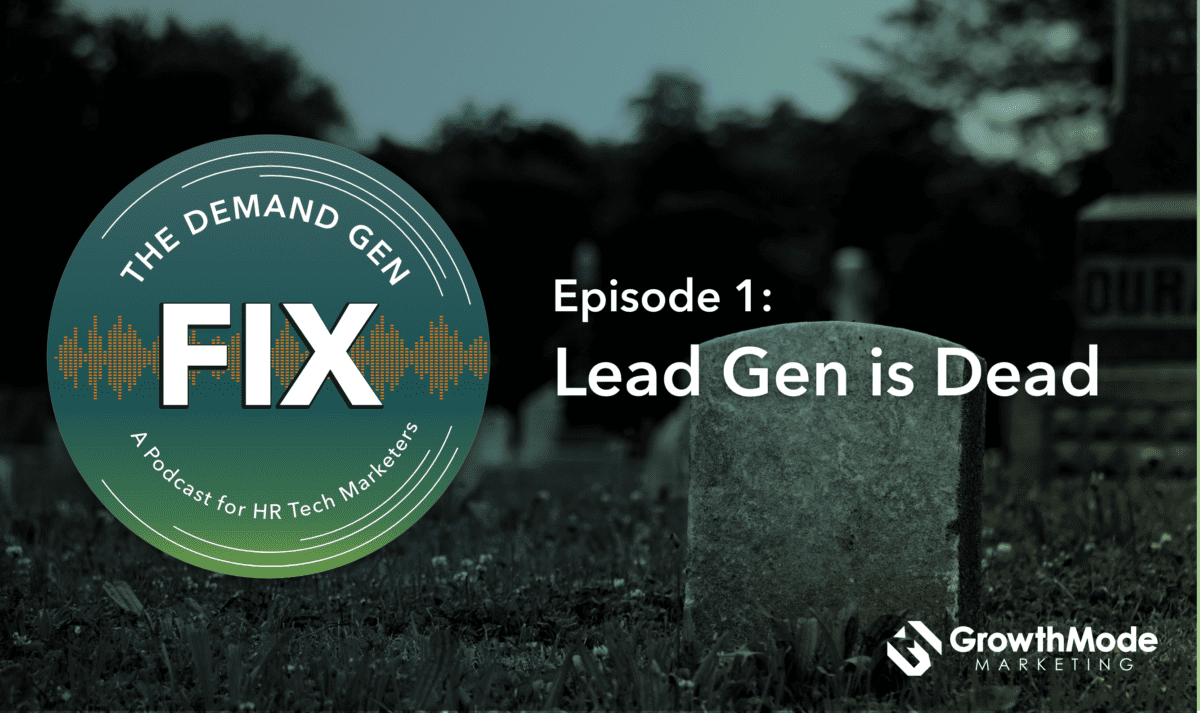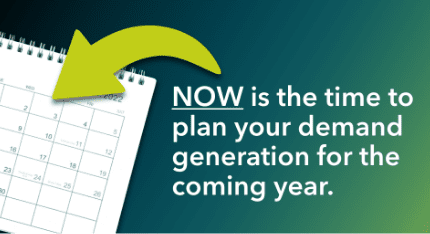Introduction to ABM Marketing
Are you tired of investing in marketing activities that cast a wide net but yield a minimal return on investment (ROI)? Welcome to Account-Based Marketing (ABM)!
According to a study by ITSMA, 87% of B2B marketers reported that their ABM initiatives outperformed their other marketing investments in terms of ROI. With ABM, instead of trying to get your message to everyone, you focus your resources on a set of target accounts within a market. The marketing message is highly personalized and designed to match the specific attributes and needs of each account. This focused approach can lead to better conversion rates and higher revenue because you’re addressing the exact needs and challenges of your target accounts.
As the team at GrowthMode Marketing, we firmly believe that every business looking to thrive should consider adopting an ABM strategy as an integral part of their B2B marketing game plan.
To help you dive into this narrative called ABM, here’s a quick overview:
- ABM revolves around strategically targeting key accounts
- It involves personalized marketing activities for each targeted account
- Unlike traditional lead-based marketing, ABM aims to drive higher ROI by focussing on fewer, but more valuable accounts
- Proper implementation and consistent measurement are key to a successful ABM marketing plan
Whether you are an experienced marketer looking to shift gears, or are new to B2B marketing, understanding ABM and a practical ABM marketing plan could be your solution to steer clear of under-performing marketing strategies and drive substantial growth for your company. Let’s discover together why ABM is the right move in your quest for success.
Understanding the ABM Marketing Strategy
The Role of Sales and Marketing in ABM
Account-Based Marketing (ABM) isn’t just another marketing strategy; it’s a powerful alignment tool that brings your sales and marketing teams closer than ever before. Traditional marketing strategies often treat these two departments as separate entities, with marketing generating leads and then handing them off to the sales team to close deals.
However, in an effective ABM marketing plan, marketing and sales aren’t merely passing leads back and forth. Instead, they’re working synergistically from the get-go, creating a personalized campaign for each target account. This enriched collaboration is crucial for successful account engagement, as it involves maintaining a strategic marketing presence within digital channels beyond the traditional sales team handoff. This prolonged communication allows for more personalized content offerings as target customers continue to gather information and seek purchase assistance.
The Shift from Traditional Lead Generation to ABM
In the traditional lead generation model, marketing efforts are spread broadly in hopes of capturing as many leads as possible. ABM, on the other hand, is a more focused approach. It concentrates resources on a select number of key accounts, providing a highly personalized experience instead of casting a wide net. In our ABM strategies, we target a small audience, enabling our marketing and sales teams to devote all their efforts to these accounts, thereby driving better conversion rates.
The shift from traditional lead generation to ABM isn’t merely about changing tactics; it’s about transforming your mindset. It’s about prioritizing quality over quantity, focusing on high-potential leads that promise the highest return on investment (ROI).
The Benefits of ABM: Personalization, Alignment, and ROI
ABM is more than just a buzzword; it’s a proven strategy that delivers impressive results. A staggering 87% of B2B marketers reported that their ABM initiatives outperformed their other marketing investments in terms of ROI.
The power of ABM lies in its ability to deliver highly personalized and relevant content to your target accounts. Personalization is the number one email marketing tactic used to improve engagement. By tailoring your marketing messages to the specific needs and attributes of your target accounts, you can create more engaging and effective campaigns.
Moreover, ABM fosters alignment between your sales and marketing teams. This alignment is crucial for a successful ABM strategy, as it ensures that internal teams work together consistently and effectively, guiding potential customers through the sales funnel.
Finally, ABM can significantly improve your ROI. With a more targeted approach, you’re investing your resources in the accounts that have the highest potential for conversion. As a result, you can expect a higher return on your marketing investment.
At GrowthMode Marketing, we understand the power of ABM, and we can help you leverage this strategy to drive growth and success for your business. We’ll work with you to develop a customized ABM marketing plan that aligns with your business goals and targets your most valuable accounts. Contact us today to learn more.
Building an Effective ABM Marketing Plan
Crafting an effective ABM marketing plan demands thoroughness and precision. It’s about focusing on the right accounts and personalizing your approach to resonate with them. At GrowthMode Marketing, we’ve perfected the art of ABM strategy and are here to guide you through the process.
Creating an Ideal Customer Profile (ICP)
The first step in your ABM marketing plan should be defining your Ideal Customer Profile (ICP). This profile represents the firmographic and technographic attributes of your highest-quality customer accounts. Common attributes include company size, industry verticals, revenue, geography, and technographics.
It’s worth noting that on average, companies spend about 29 percent of their marketing budgets on ABM activities (ITSMA). Hence, it’s crucial to invest time and resources into building a robust ICP to ensure your marketing dollars are put to good use.
Measuring First-Party and Third-Party Intent
Once you’ve identified your ICP, the next step is to measure both first-party and third-party intent. This involves assessing your existing accounts’ interaction with your brand (first-party intent) and evaluating their engagement with related content outside your brand (third-party intent). This can be achieved by using vendor data to identify unknown accounts based on fit data and intent signals.
Ordering Your Target List
Now that you have your ICP and have measured intent, you need to organize your target account list (TAL). This list should comprise accounts that have the highest probability of closing based on shared ICP attributes. You can use machine learning and predictive models to score/tier your account list. This not only helps with prioritization, but it also enhances efficiency in your ABM marketing plan.
Identifying the Decision-Making Unit (DMU)
In B2B marketing, it’s rare to find a lone decision-maker. Therefore, it’s imperative to map out your steps for finding key stakeholders within your target accounts. You can do this by starting with account-to-contact matching in your own database and using vendor databases to find buyers with certain job titles and functional areas.
Defining the Pain Points of Your Target Accounts
Finally, to create a truly effective ABM marketing plan, you need to define the specific pain points of your target accounts. This will allow you to tailor your marketing efforts to address these challenges, making your campaigns more impactful and relevant.
ABM is not just about targeting; it’s about personalization and relevance. At GrowthMode Marketing, we help you understand your target accounts at a deeper level, enabling you to provide solutions that resonate with their specific needs and challenges. To learn more about how we can help you with your ABM marketing plan, get in touch with us.
Implementing Your ABM Marketing Plan
Building and implementing your ABM marketing plan is a critical step in your journey to increase revenue and growth. With a well-defined plan, you can focus your efforts on the accounts that hold the most potential for your business. Let’s delve into the steps you need to take.
Aligning Sales and Marketing for ABM
One of the most crucial elements of a successful ABM marketing plan is aligning your sales and marketing teams. Both teams need to work together to create a seamless customer experience, from lead generation to final sale.
At GrowthMode Marketing, we understand the importance of this alignment. Our teams work closely together to ensure that our marketing efforts generate qualified leads for the sales team. This alignment helps us create a personalized buying experience for our clients, making them feel valued and understood.
Creating Personalized Content for Target Accounts
Personalization is at the heart of ABM. Our teams at GrowthMode Marketing focus on creating personalized content for each of our target accounts. This includes not only the messaging we use, but also the channels we use to deliver it.
We understand that different accounts have different preferences when it comes to communication. Whether it’s via email, social media, or direct mail, we ensure that our messages reach our target accounts in the most effective way possible.
The power of personalized communication in demand generation cannot be overstated. As the research above from HubSpot shows, the number one email marketing tactic used to improve engagement is email message personalization.
Measuring the Results of Your ABM Campaigns
Finally, measuring the results of your ABM campaigns is crucial to gauge their success and adjust your approach as necessary. At GrowthMode Marketing, we use advanced analytics to track the success of our campaigns. This allows us to see what’s working, what’s not, and make data-driven decisions about our future strategies.
As the research above indicates, 87% of B2B marketers reported that their ABM initiatives outperform their other marketing investments in terms of ROI. Moreover, 91% of companies using ABM increase their average deal size, with 25% reporting an increase of over 50%.
Implementing an ABM marketing plan is not a one-time task but a continuous process of improvement and refinement. By aligning your sales and marketing teams, delivering personalized content, and measuring your results, you’ll be well on your way to creating successful ABM strategies that drive growth and revenue for your business.
It’s not about the quantity of leads, it’s about the quality. By focusing your efforts on the accounts that matter most, you can boost your ROI and achieve sustainable business growth. To learn more about how GrowthMode Marketing can help you implement your ABM marketing plan, contact us today.
Examples of Successful ABM Campaigns
After understanding the fundamentals of creating an ABM marketing plan, it’s helpful to look at some real-world examples. These examples illustrate how the principles of ABM can be applied in innovative and effective ways. They also provide inspiration for crafting your own unique ABM strategies.
Salesloft’s Personalized Gift System
One standout example of a successful ABM campaign comes from Salesloft, a sales engagement platform. They implemented a personalized gift system as part of their ABM strategy. This creative approach allowed them to distribute personalized gifts to their potential customers, which made the prospects aware of their company and its potential, as well as helping to engage them in other campaigns.
Personalized Websites and Custom Comic Books
DocuSign and GumGum are other great examples of businesses that have effectively implemented ABM. DocuSign created unique websites tailored to six separate industries that they wanted to target. They then drove their target contacts to these websites via display ads, populating the sites with highly personalized content that significantly increased conversions.
GumGum, a contextual intelligence company, targeted a specific account with T-Mobile. They created a custom superhero comic book featuring the T-Mobile CEO as the hero of the story. This creative and personalized approach went viral, successfully landing them the T-Mobile account.
Creative Offline Marketing Tactics
Account-based marketing doesn’t just have to happen in the digital realm. Intridea, a product design company, purchased a billboard in front of the Ogilvy New York City headquarters to get the brand’s attention — and it worked. This unconventional offline tactic is an excellent example of how thinking outside the box can yield successful results in ABM.
At GrowthMode Marketing, we’ve seen similar success with our ABM campaigns. For instance, our work with Store Opening Solutions involved a highly strategic, high-touch, multi-component campaign focused on 100 decision makers within their key target audience. This resulted in sustained engagement with 15 key account targets and 3x the industry average CTRs for LinkedIn campaigns.
These examples illustrate the power of ABM and the creative ways it can be applied to engage and convert high-value prospects. However, it’s important to remember that the most effective ABM strategies are those that are tailored to the unique needs and pain points of your target accounts. This is where our expertise at GrowthMode Marketing can be invaluable. By working with us, you can create a personalized ABM marketing plan that drives results and contributes to your business growth.
Tools and Software for ABM Marketing
Embarking on an effective ABM marketing plan requires not only strategic thinking but also the right set of tools and software to aid in execution. At GrowthMode Marketing, we believe in harnessing the power of technology in our marketing efforts. Here, we will delve into the key tools that can help you achieve your ABM objectives.
The Role of ABM-Friendly Software like Adobe Marketo Engage
One of the most powerful tools in ABM marketing is a marketing automation platform like Adobe Marketo Engage. This software enables you to manage campaigns of any scale and automate experiences across channels. It uses artificial intelligence to segment your audience, bringing your sales and marketing teams together for a unified approach.
In the context of an ABM marketing plan, a tool like Marketo Engage can help you target specific prospects within your accounts, create personalized content, and measure results in real time. Essentially, it gives you control over every stage of the customer journey, ensuring that each prospect receives a tailored experience.
The Importance of Website Personalization in ABM
Website personalization is another critical aspect of ABM marketing. As suggested in the podcast discussion, with a platform like ABM, you can customize your website content for specific target accounts. This means that whenever anyone from a target account visits your website, they are met with content that is highly relevant to their company.
This level of personalization makes your target accounts feel recognized and valued, increasing the chances of them engaging with your brand and ultimately converting. We at GrowthMode Marketing help our clients leverage this tool to ensure that their ABM strategies are successful.
Features to Look for in an ABM Platform
When selecting an ABM platform, there are several key features to consider. First, it should offer account and contact-level targeting to enable personalized campaigns. It should also integrate with your existing CRM system to leverage your contact data effectively.
Another essential feature is the ability to measure and analyze results. With a robust analytics tool, you can track key performance indicators like engagement rates, conversions, and customer lifetime value. This allows you to course-correct if necessary and optimize your ABM efforts for better results.
In conclusion, the right tools and software can make a huge difference in the success of your ABM marketing plan. They allow you to target your efforts more effectively, create personalized experiences, and measure the impact of your campaigns. By leveraging these tools, we at GrowthMode Marketing can help you create and execute a successful ABM strategy that drives growth for your business.
Conclusion: The Future of ABM Marketing
In the ever-changing landscape of B2B marketing, ABM strategies continue to evolve and are poised to shape the growth trajectory of companies. Let’s look at what the future holds for ABM marketing.
The Hybrid Approach: Combining ABM and Demand Gen
The trend for B2B marketing is shifting towards a more integrated and data-driven approach, which is where the combination of ABM and demand generation comes into play. This approach emphasizes the importance of understanding your target audience, creating valuable content, and leveraging the power of digital marketing to reach your ideal customers.
At GrowthMode Marketing, we have demonstrated that a well-executed demand generation strategy not only attracts the right audience but also converts them into loyal customers. By blending strategy, messaging, PR, content marketing, and digital marketing, we have successfully bridged the gap between marketing and sales, driving unprecedented growth for our clients.
The Revenue Potential of ABM
The focused nature of ABM makes it an efficient revenue driver. ABM strategies align sales and marketing teams, enabling businesses to run coordinated campaigns that are more likely to perform better. This focused pursuit of target accounts can lead to higher win-rates and a shorter sales cycle, ultimately driving revenue growth.
As SiriusDecisions research shows, 80 percent of marketers reported higher win-rates among ABM accounts, indicating a significant revenue potential.
The Importance of Shifting Focus from Volume to Value in ABM
In the future of ABM marketing, the focus will be on delivering the highest ROI possible per account. This means shifting the attention from high-volume to high-value. An effective ABM marketing plan places a spotlight on best-fit accounts rather than a broad audience, allowing businesses to invest their resources more efficiently.
Here at GrowthMode Marketing, we focus on implementing targeted ABM strategies that drive customer retention and increase revenue. Our approach is personalized, data-driven, and closely aligns with your unique business objectives.
As you look to the future and consider your B2B marketing strategy, the power of ABM is not just a trend, but an essential strategy for success. If you’re ready to embrace the potential of ABM, contact us to learn how we can help. For more insights into B2B marketing strategies, check out our blog.





